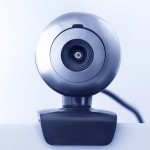 In an age of high-tech and sometimes complicated methods of information delivery and collaboration, it can be easy to overlook the power of a simple solution. Take the use of a whiteboard during the recent nuclear arms negotiations in Lausanne, Switzerland.
In an age of high-tech and sometimes complicated methods of information delivery and collaboration, it can be easy to overlook the power of a simple solution. Take the use of a whiteboard during the recent nuclear arms negotiations in Lausanne, Switzerland.
Officials who took part in the weeklong talks — which spanned a few all nighters — have said that this fixture of football locker rooms and calculus lessons played a key role in shepherding the delicate arms talks toward an agreement. “Wherever Wendy Sherman, the lead American negotiator, traveled in the ornate hotel here, she was trailed by a whiteboard, where the Iranians and the Americans marked down their understandings, sometimes in both English and Persian,” reported The New York Times.
That board enabled a fluid discussion, “letting both sides consider proposals without putting anything on paper,” David E. Sanger and Michael R. Gordon wrote. An anonymous White House official called it “a brilliantly low-tech solution.”
Even though traditional whiteboards can be challenging to use in large groups, they offer myriad benefits: They encourage discussion, map progress, and draw connections that might only become visible once….well, they’re visible. The boards’ potential to accelerate creativity and collaboration hasn’t waned since they first appeared in the 1960s, as was exemplified in Switzerland last week. Maybe whiteboards make a comeback in 2015 — or maybe they never really went away.




